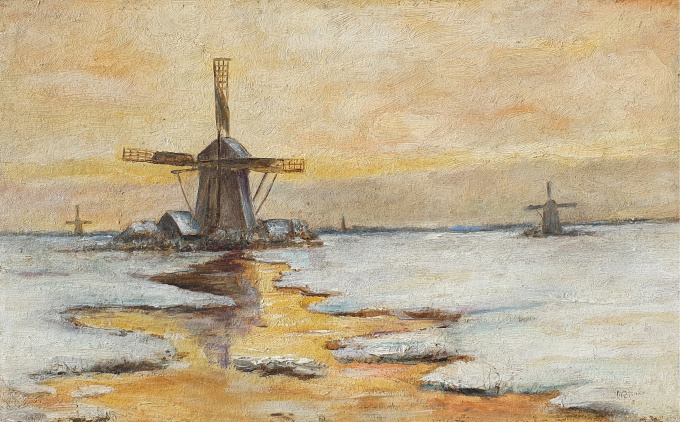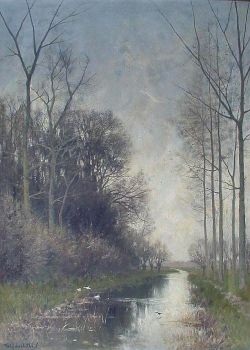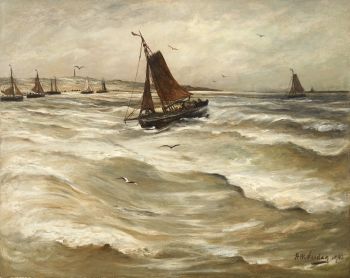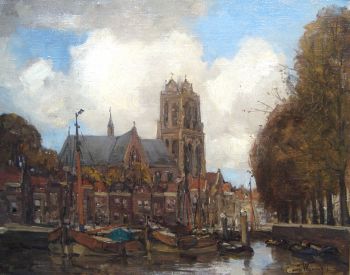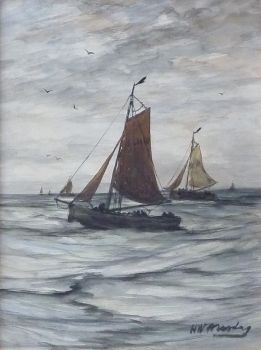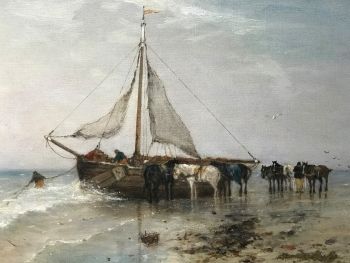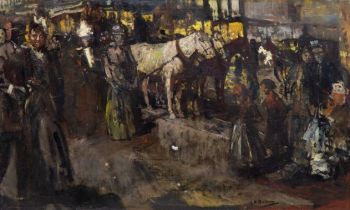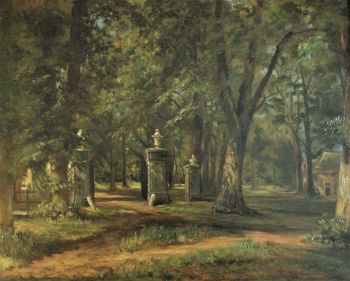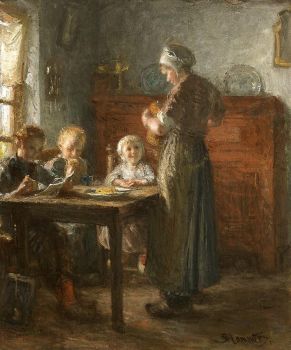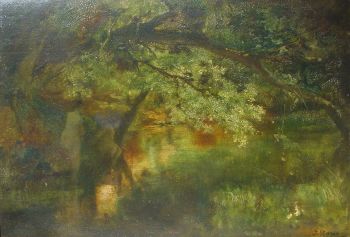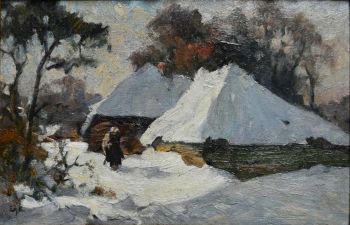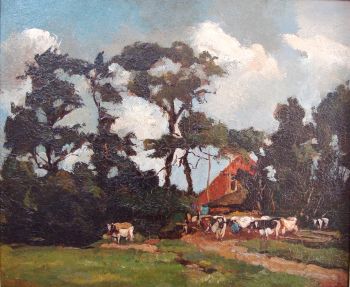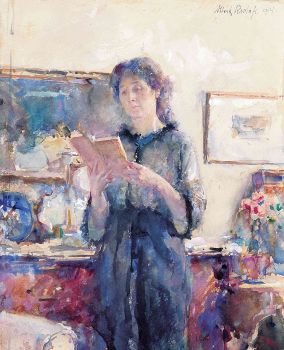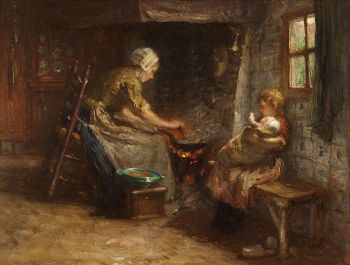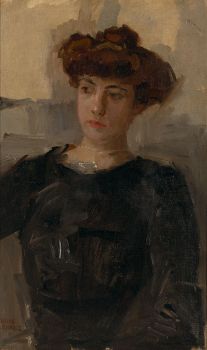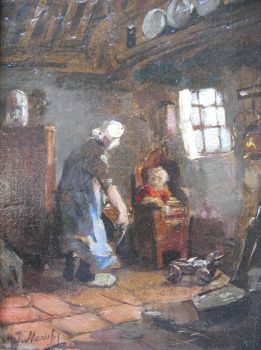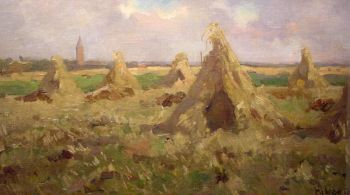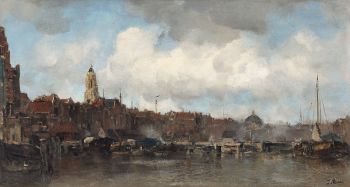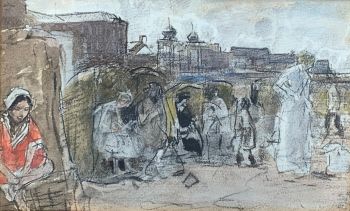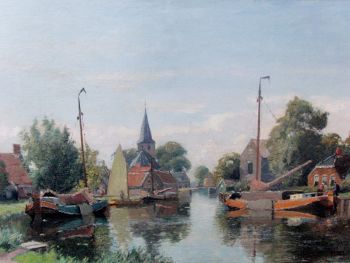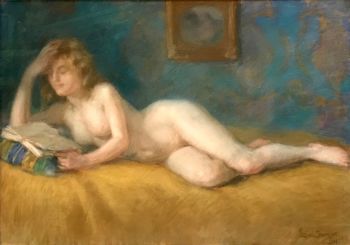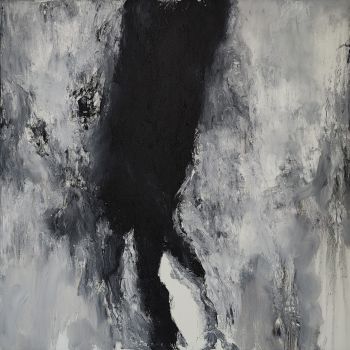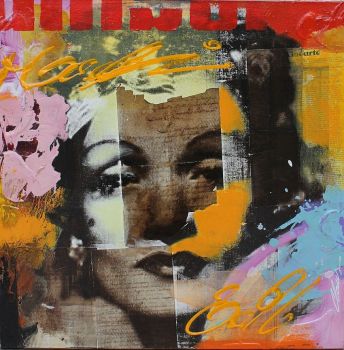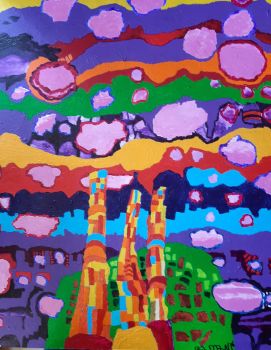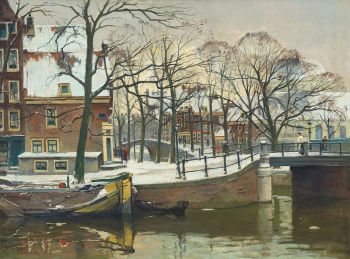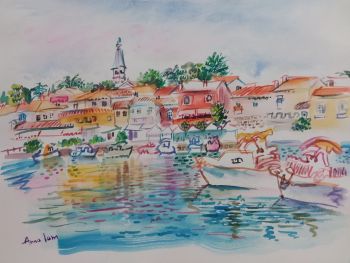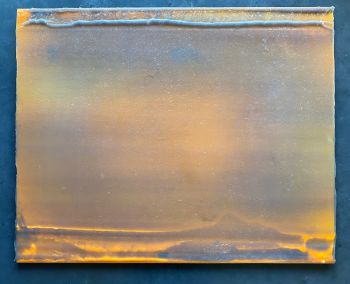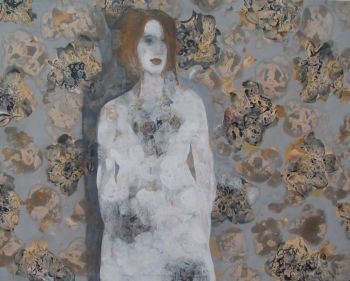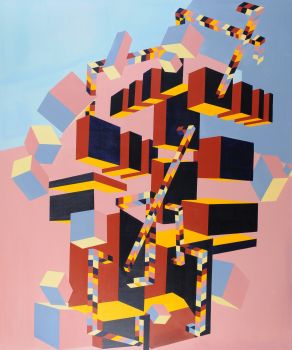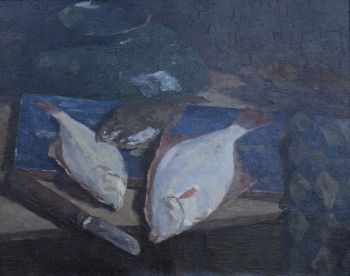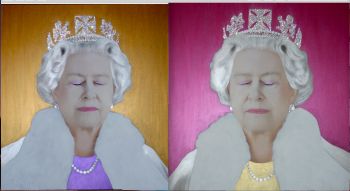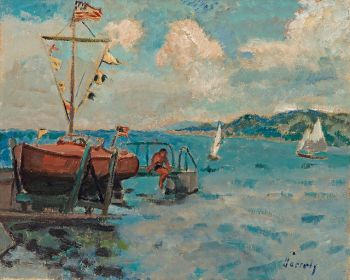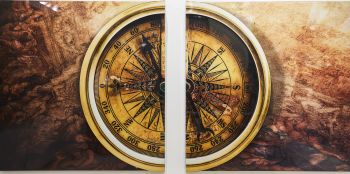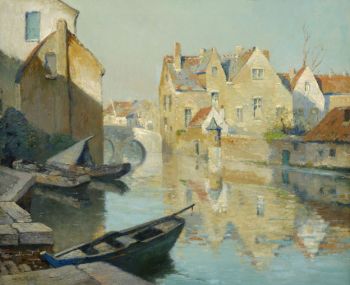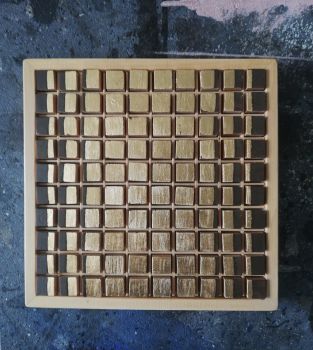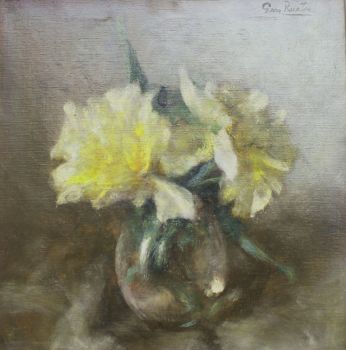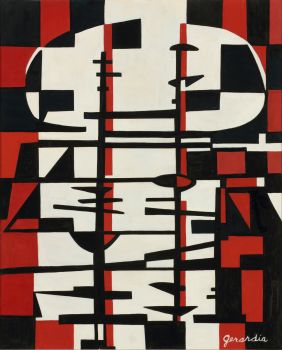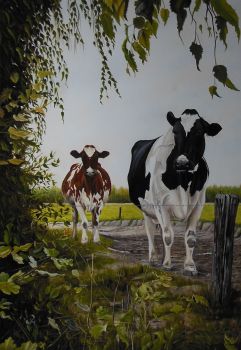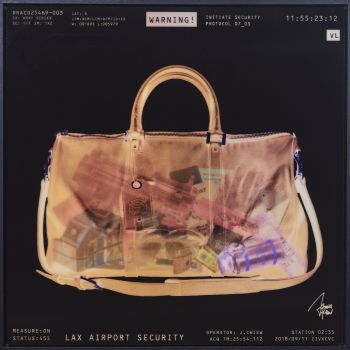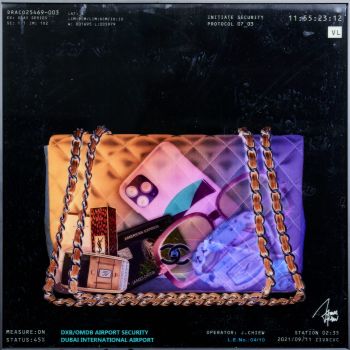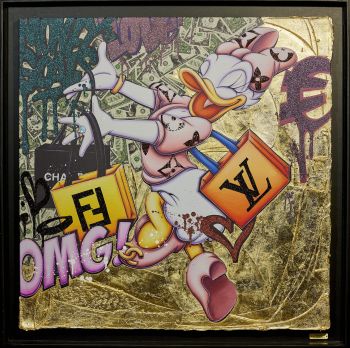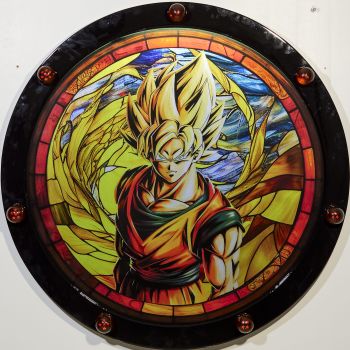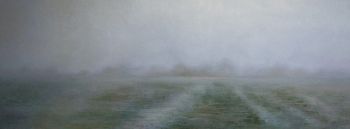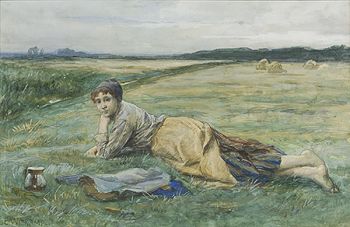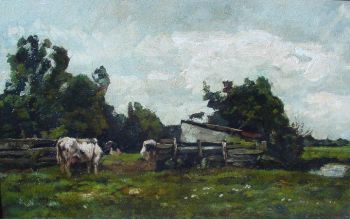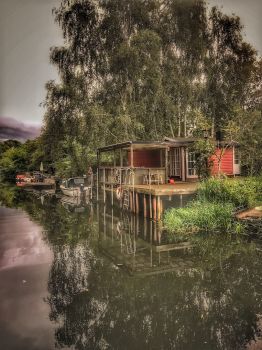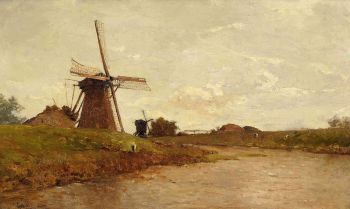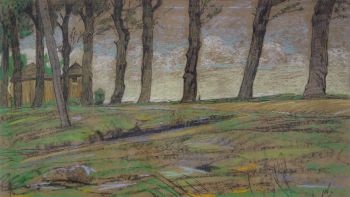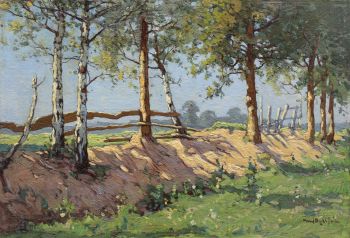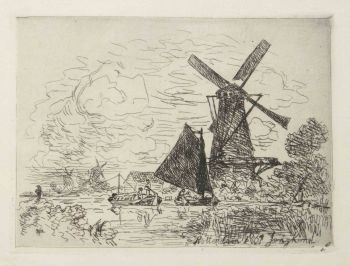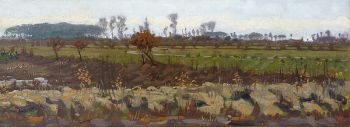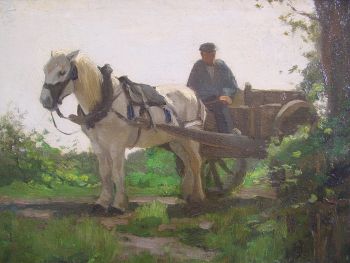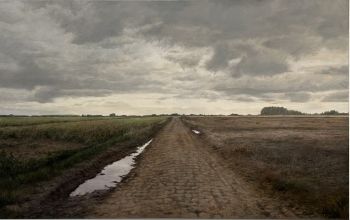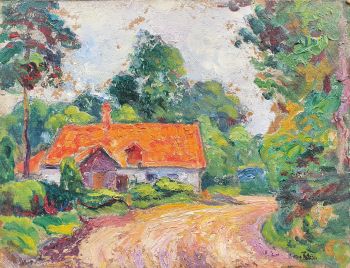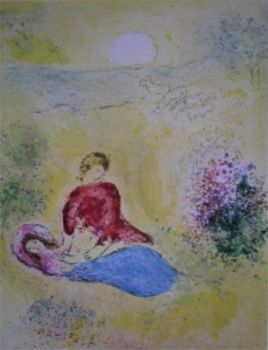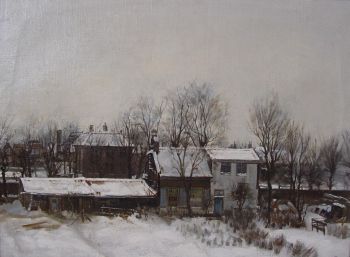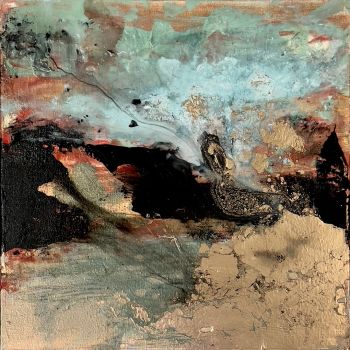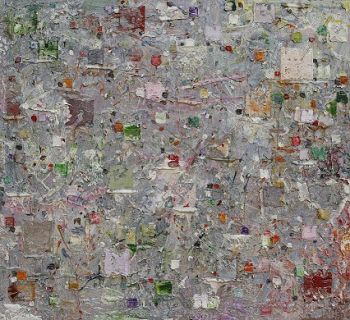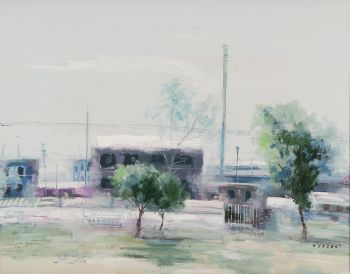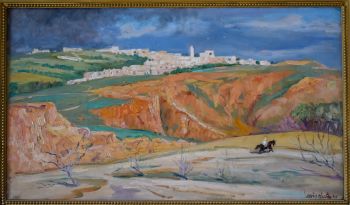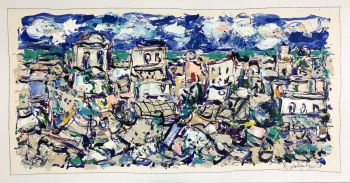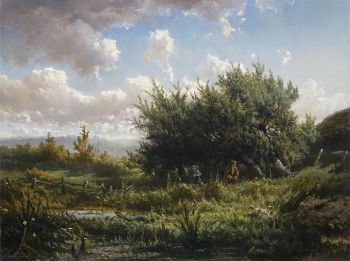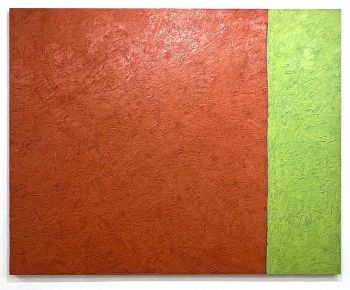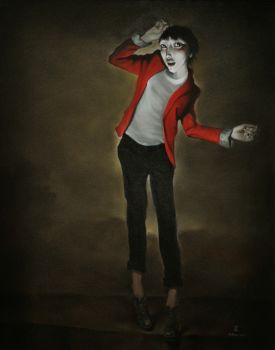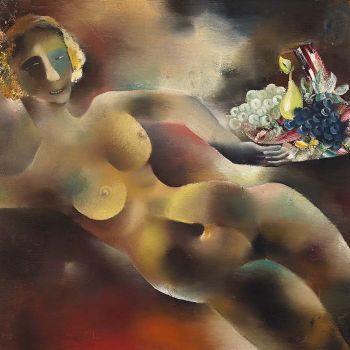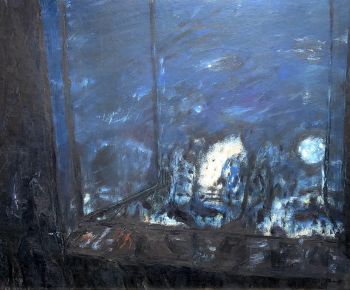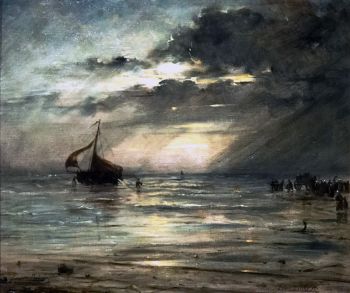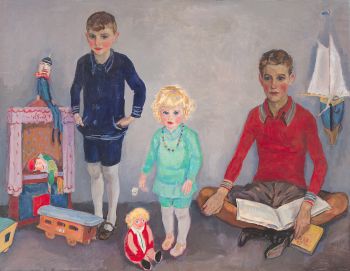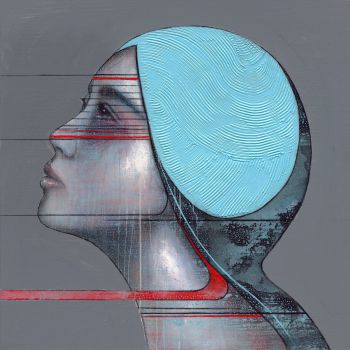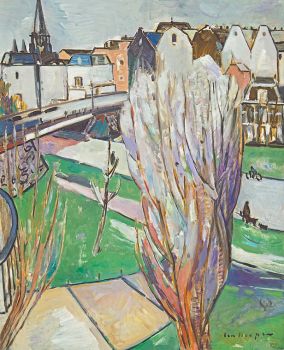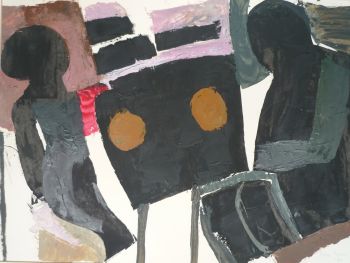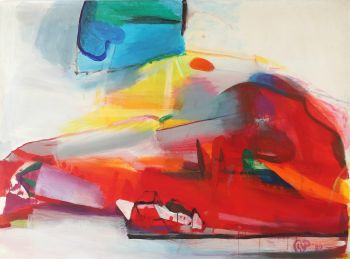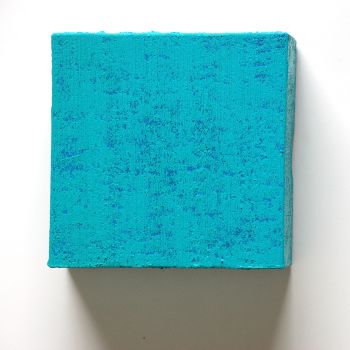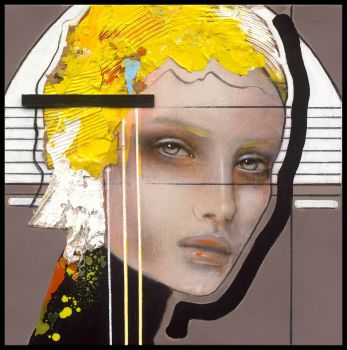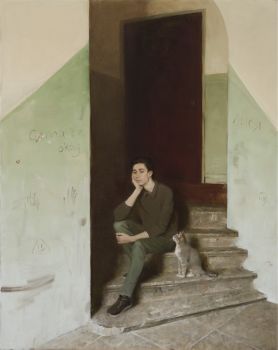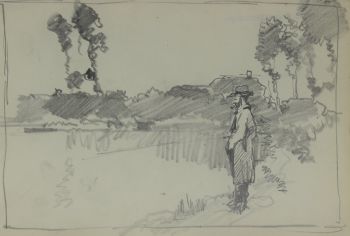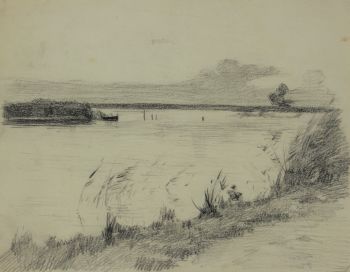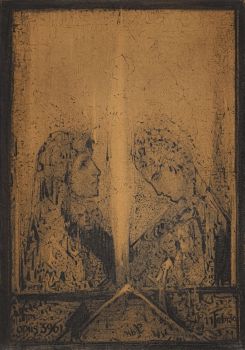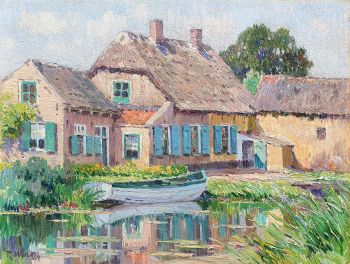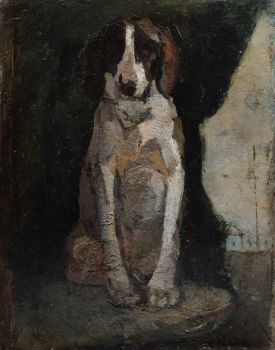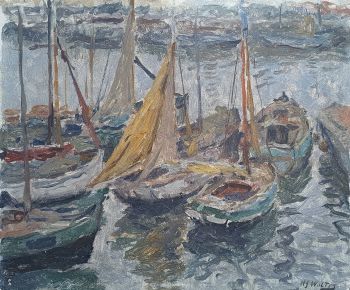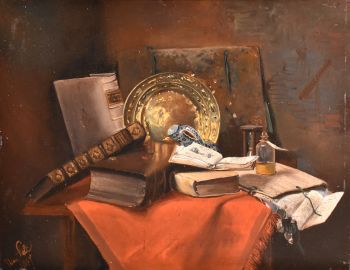Winter in Holland 1900 - 1910
Philippe Zilcken
WoodBoardOil paintPaint
18.50 ⨯ 31 cm
ConditionExcellent
€ 2.750
Klooster Fine Art
- About the artwork[EN]
Philip Zilcken used an unusual palette to create the atmosphere for this winter view of the Dutch countryside. Winter in Holland may be the same painting that Zilcken showed in 1909 on the 79th international exhibition in the Museum of Modern Art in Rome, Italy. In the review of the exhibition in De Nieuwe Courant, on 10 April 1909, the reviewer remarked that out of all Dutch contributors, Zilcken was the only artist that proved of international cachet. The writer stated that ‘An old gate in Algiers’ and ‘Winter in Holland’ were painted in eccentric and atmospheric tones that draw much attention. By doing so, the reviewer wrote that Zilcken was the only Dutch artist standing out from the masses.
This landscape of the countryside show just those atmospheric tints the reviewer praised in Zilcken’s Winter in Holland. By having the warmly coloured sky reflected in the water stretching towards the closest windmill, Zilcken created a stark contrast with the snow on the fields. Two more windmills can be seen in the background. All three windmills have their sails in the short rest position. When millers weren’t expecting rain for a short while, the sails would be left in this position, resembling a big ‘+’ sign.
Especially in the sky, Zilcken used his typical, vivid brushstrokes, almost giving a sense of movement. This painting on board is signed ‘Ph Zilcken’ on the lower right.
[NL]
Philip Zilcken gebruikte voor dit Nederlands winterlandschap een ongebruikelijk palet om de juiste sfeer weer te geven. Mogelijk is Winter in Holland hetzelfde schilderij dat Zilcken toonde op de 70ste internationale tentoonstelling voor moderne kunst in Rome in 1909. In de tentoonstellingsrecensie in De Nieuwe Courant, op 10 april 1909, merkte de recensent op dat van alle Nederlandse inzendingen, Zilcken de enige met internationale allure was. De auteur stelde dat ‘Een oude poort in Algiers’ en ‘Winter in Holland’ in eccentrische en atmosferische tonen waren geschilderd, en zo veel aandacht trokken. Daardoor zou Zilcken als enige Nederlander zijn opgevallen in de massa.
Dit polderlandschap laat precies het soort atmosferische tonen zien die de recensent in Zilcken’s Winter in Holland prees. Door de warm gekleurde lucht in het water te laten reflecteren, legde Zilcken extra nadruk op het contrast met de sneeuw op de weilanden. Alle drie de windmolens hebben hun wieken in de korte ruststand staan. Wanneer molenaars een tijdje geen werk verwachtten, werden de wieken in deze stand gezet.
Met name in de lucht gebruikte Zilcken zijn kenmerkende, dynamische penseelstreken, die bijna beweging lijken te suggereren. Het schilderij werd op board gemaakt, en rechtsonder gesigneerd: ‘Ph Zilcken’. - About the artist
Charles Louis Philippe Zilcken was a Dutch artist and writer. He was born in The Hague in 1857, the place where he first registered for drawing lessons during his studies at the Gymnasium Haganum as well. He went down in history due to his position as a co-founder of the Dutch Etching Society and as an editor for Elsevier's monthly Illustrated Journal, the predecessor of the Elsevier Journal, from 1896 to 1905.
In 1928 he personally wrote his memoires under the title translated as 'Memories of a Dutch Painter of the Nineteenth Century'; primarily a remembrance of his travels to and interest in North-African countries such as Egypt. His focus on the Oriental can be traced in his oil paintings, pastels and etchings when examining his use of architectural design and the individual is only known to play a role of subordinate kind. A great number of work drawn on the spot and printed in red-brown ink has survived the test of time; these are often characterized by a sketchy design.
Zilcken passed away in the year 1930. Nowadays, his work can be admired in museums such as the Amsterdam Rijksmuseum.
Are you interested in buying this artwork?
Artwork details
Related artworks
Fredericus Jacobus van Rossum du Chattel
Poldervaart in the Vecht river region1899 - 1901
Price on requestKunsthandel Pygmalion
Bernardus Johannes Blommers
Het bereiden van de maaltijd1870 - 1914
Price on requestStudio 2000 Art Gallery
Isaac Israels
"Een essayeuse bij het modehuis Hirsch"1865 - 1934
Price on requestStudio 2000 Art Gallery
Herman Bogman jr.
Flower still life of a nasturtium in a blue vase1950 - 1965
Price on requestAdelwein Kunst
1 - 4 / 24- 1 - 4 / 24
Willem Maris
Polderlandschap met koeien en molens op warme zomerdag1880 - 1890
Price on requestPrivate Collection Classic Arts
Aris Knikker
Riverview with a village (Kortenhoef, Netherlands)1887 - 1962
Price on requestKunsthandel Pygmalion
1 - 4 / 24- 1 - 4 / 24
- 1 - 4 / 12

